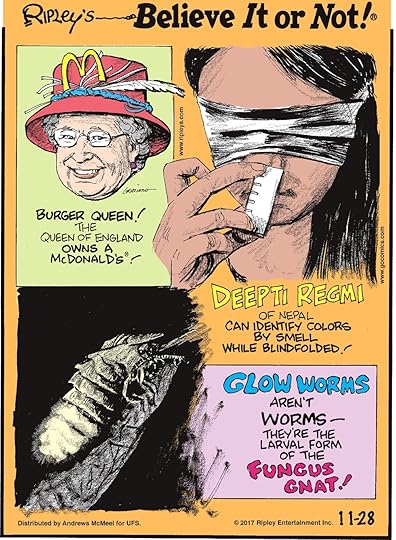Ripley Entertainment Inc.'s Blog, page 374
December 1, 2017
Nights of Lights Enchants St. Augustine at Ripley’s
Featured in Ripley's Believe It or Not!

It should come as no surprise that at Ripley’s Believe It or Not! we relish in the strange, mind-bending artifacts and incredible history that continues to influence generations upon generations.
History Of Ripley’s St. Augustine Odditorium!
Did you know the first Ripley’s permanent Odditorium to ever open was in St. Augustine? Located at 9 San Marco Avenue, the Odditorium was once known as The Warden Castle.

Old City Gate, St. Augustine, Fla. Detroit Publishing Co. publisher
Date Created/Published: [ca. 1900]
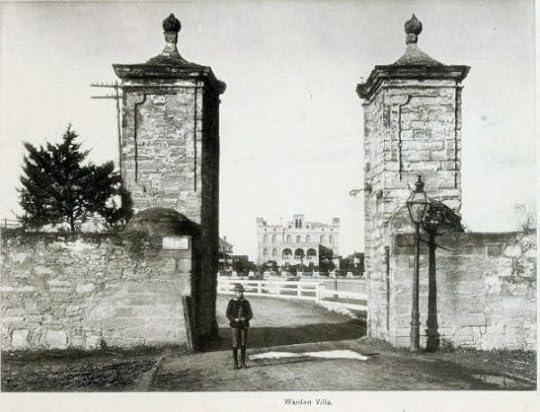
Old City Gate, St. Augustine, Fla. Detroit Publishing Co. publisher
Date Created/Published: [ca. 1900]

Inside the castle when it was a hotel! Robert Ripley stayed here often.

Believe it or not, Robert Ripley tried time after time to purchase Castle Warden, but he was continuously denied. It wasn’t until his sudden death in 1949 that he was able to acquire the property in 1950.

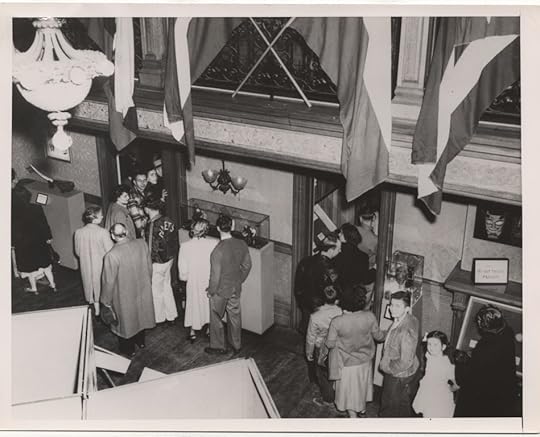
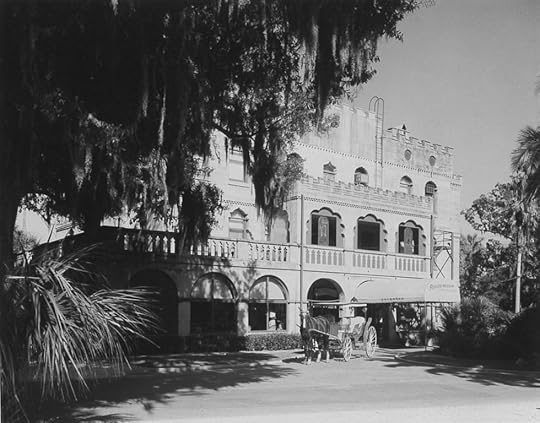
Old photos circa 1950 of the St. Augustine BION.

Red Trains Come to Ripley!
Did you know that Ripley’s Red Trains are one of the oldest attractions in the state of Florida? Operating since 1953, they were born from the “Saint Augustine Trailer Train Wars” between H.L. “Slim” McDaniel and Joseph “Joe” McClure. The trains were incorporated in 1967 and later became the property of another Saint Augustine legend, Mr. A.H. “Hoopie” Tebault.
With this fun bit of Florida history, it only seemed natural to incorporate the Red Trains with our St. Augustine Odditorium. In 2014 the Red Trains joined the Ripley Entertainment family of attractions, adding to the ongoing legacy of Ripley’s in this historically beautiful, and fascinating city!
Nights of Lights
If you thought St. Augustine was already enchanting, you’ve never seen anything as breathtaking as Nights of Lights. Finding magic in the holidays is as easy as visiting Florida. Selected by National Geographic as one of the ten best holiday lighting displays in the world, St. Augustine’s Nights of Lights features more than 3 million lights! Believe it or not, the inventor of Christmas lights, Edward Hibberd Johnson was not only an engineer but a businessman. He invested $35,000 in helping form the Edison Lamp Company. Johnson seized the perfect opportunity to find a way to sell lights-blubs. He hand-wired around 75 or so light bulbs, ranging from red, blue, and white, around a tree at the street-side window of his shop. Keep in mind, during the early 1900s, electricity wasn’t available to everyone. Johnson used a generator to keep the egg-shaped lights going.
Just one string of bulbs would have easily cost you $12 in 1900, roughly $350 today! It wasn’t until 1914 a string of lights would range around $1.75.
This season, step aboard the Red Train and experience the 24th Annual Nights of Lights in St. Augustine—your chance to see the nation’s oldest city like never before as it comes to life with millions of tiny bright lights!


Trust us when we say, you will not want to miss celebrating the festivities with us!
The city will offer complimentary shuttles for Nights of Lights from lots at 301 San Marco Ave and 200 San Sebastián View every Saturday night in December. Shuttles will stop at the Visitor Information Center across the street from Ripley’s, and you can just walk over to start your tour!


Enjoy holiday carols and free magic viewing glasses! Tours are offered every night except Christmas.
We want to wish you the merriest of holidays!

Have you experienced Nights of Lights? Let us know in the comments below!
The Deepest Fish and a Man Swallows Metal
Featured in Ripley's Believe It or Not!
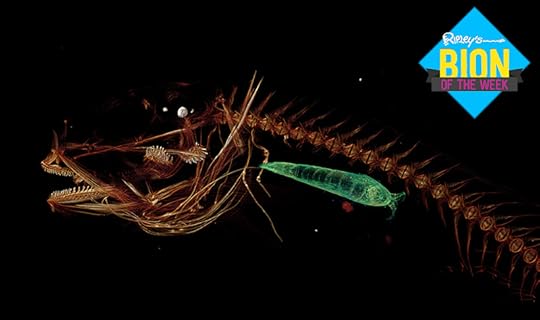
[November 26th-December 2nd, 2017] Fish living in the wet abyss, Griswold Christmas trees, and a man eats 15 pounds of metal.
5. DIY Civil Engineering
You feel helpless sitting in standstill traffic day after day, but one man in China took matters into his own hands. He was caught on surveillance cameras painting his own traffic directions on a lane he thought was under-utilized, and redirected traffic the opposite way. Authorities fined him for his dangerous behavior as cars had to swerve around him as he painted.

4. Can a Christmas Tree be too Big?
Police in Massachusetts had to pull over a rogue Christmas tree they found driving down the highway. After investigating further, they realized there was a car underneath it, almost entirely covered by the giant tree’s branches.
3. Navy Stops Pepper-Spraying Soldiers
Believe it or not, the Navy has routinely hosed its soldiers with pepper spray every three years. The training involves being sprayed in the eyes, then completing a combat circuit. The exercise was meant to keep their soldiers ready to operate under duress.
2. Surgeons Remove Coins and Nails
After going to the emergency room with abdominal pains, surgeons puled 263 coins and 100 nails from Maksud Khan’s stomach. Doctors at the Sanjay Gandhi Hospital in Satna, India, also found razor blades, glass, stones, and a shackle inside Khan, who, believed to be a mentally ill, was seen swallowing coins he was paid at his taxi job.
Из желудка индийца извлекли сотню гвоздей и 263 монеты
35-летний Максуд Кхан (Maksud Khan) из Индии поступил в поликлинику с болями в животе и медицинские работники сделали эндоскопию, для того, чтобы выяснить причину. Они были потрясены, когда нашли в ж https://t.co/ykoxFiiUjf pic.twitter.com/8MhCdbD32d
— europravda.net (@europravdanet) November 30, 2017
1. New Deepest Fish
Researchers at the University of Washington have collected samples of what is the deepest living fish discovered so far. The Mariana snail fish lives in the Midnight Zone—named for the pitch blackness of its waters—one of the deepest parts of the Mariana Trench. These delicate-looking pink and white fish survive the crushing pressure and harsh environment of the deep by feasting on invertebrates that other fish can’t swim deep enough to eat.
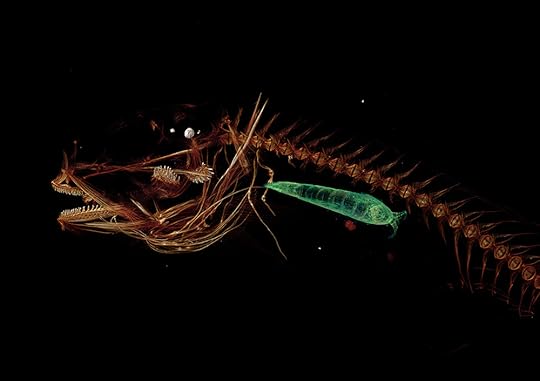
Adam Summers/University of Washington
Ripley’s Guide to Netflix
Featured in Ripley's Believe It or Not!

Can’t decide what to watch, or are just plain tired of re-watching old sitcoms and blockbusters at home? No problem, we scoured Netflix for the strangest movies that happen to have some extra-special hidden believe it or nots!
Documentary: Jim & Andy the Great Beyond
A film about Andy Kaufman is bound to be filled with strangeities, but a movie about a movie about Jim Carrey pretending to be Andy Kaufman who also sometimes pretends to be Tony Clifton?
Carrey fully embodied Kaufman even when the cameras were switched off and admits he really identified with the late comedian. Kaufman himself was a comedian and actor, but also an accomplished bongo drummer and wrestler who was in the prime of the beatnik movement as he was becoming established.
Kaufman often had his friend and comedy partner Bob Zmuda portray his character Tony Clifton when Kaufman was unavailable. When Carrey got invited to a party at Hugh Hefner’s Playboy Mansion, Carrey had the actor playing Zmuda in the biopic show up to the party. Everybody thought it was Jim Carrey, but when Carrey actually showed up hours later Hefner had everybody involved in the filmed kicked out.

Jim Carrey with Tony Clifton at the opening of Jim & Andy: The Great Beyond
Believe it or not, Carrey and Kaufman share a birthday: January 17th.
Mystery: Who Framed Roger Rabbit
Over 85,000 hand-painted animation cells went into the making of Who Framed Roger Rabbit. Directed by the same technical genius who made the Back to the Future movies, Robert Zemeckis, the film was a marvel in its time. At a budget of about $70,000,000, Who Framed Roger Rabbit was the most expensive movie made in the 1980s, beating out Raiders of the Lost Ark, Empire Strikes Back and Return of the Jedi combined!
Props were moved with wires and hidden robots, while actors performed with almost nothing as animated characters were drawn in later to match. One trick animators used to make Jessica Rabbit visually eye-catching was to make her bosom bounce the opposite direction it should as she moved and walked as compared to an actress in real life.

Believe it or not, Judge Doom’s—Christopher Lloyd—toon killing liquid was comprised of turpentine, acetone and benzene because those are the chemicals animators use to erase mistakes.
Science Fiction: Stranger Things
Mystery, drama and action, it’s no wonder people have fallen in love with Stranger Things. Just in case you haven’t finished Season 2, we’ll skip any spoiler talk and instead mention some of the series’ real-life inspirations.
Secret government programs trying to breach inter-dimensional barriers have been long credited to the Montauk Project. An unconfirmed government program that develops psychological warfare techniques and experimental science like time travel.
Producers of the show actually used “Montauk” as a working title for the series, and were clearly influenced by conspiracy theories about mind control experiments and covert cover-ups.

Camp hero, home of the “Montauk project.”
Action: Armageddon
Perhaps Michael Bay’s most American flag-filled movie yet, Armageddon is entertaining but wildly inaccurate. Ignoring the sensibility of training oil drillers to be astronauts instead of the other way around, the main premise of the movie is false and misleading.
According to astronomer Phil Plait, there are more scientific errors in a clip of Bruce Willis blowing up the Texas-sized asteroid than there are frames. Believe it.
The movie suggests that a well-placed nuclear bomb will blast away the asteroid, sparing Earth from an extinction-level cataclysm, but not only would the nuclear ordinance used in the film do almost nothing to an asteroid that size, it would potentially just create a much more dangerous irradiated hail of rocks hurtling towards Earth.
Plait goes on to say that a device with enough power to blast such a huge meteor to dust would pose an even greater risk to Earth than a comet would.
Despite many attempts by space scientists to devise alternative ways to deflect incoming threats to the Earth, NASA admitted in 2007 that options that included the use of nuclear bombs were “10-100 times more effective” than those that didn’t.

A space probe impacting the Tempel 1 comet (about 1/100th the size of the Armageddon asteroid.
Comedy: Heathers
Stranger Things’ Winona Ryder makes an appearance again, this time with the cult-classic Heathers. What starts out as a movie about navigating the social cliques of high school quickly turns into a black comedy murder romp, led by Ryder and co-star Christian Slater. Heathers has always proved controversial in its depiction of suicide, but it also has been the subject of many strange coincidences…
The same week Ryder received the script for the movie, a fellow student at her high school committed suicide, an experience she says spurred her on to make the movie.
Equally tragic were the semi-predicted deaths of two cast members. Jeremy Applegate, whose character prays not to commit suicide, killed himself in 2000. Kim Walker, one of the Heathers, famously asked “Did you have a brain tumor for breakfast?” and ended up dying of a brain tumor.

Croquet was once an Olympic sport!
Rip’s Guides to:
We hope you give these odd movies a watch, and if you’re looking for something more exciting than popcorn to go with your Netflix binge, then make sure to check out Ripley’s Guide to Non-Perishables. Pleasent viewing.
Source: Ripley’s Guide to Netflix
CARTOON 12-01-2017
November 30, 2017
Or Not: Chameleons Change Their Color to Match their Surroundings
Featured in Ripley's Believe It or Not!
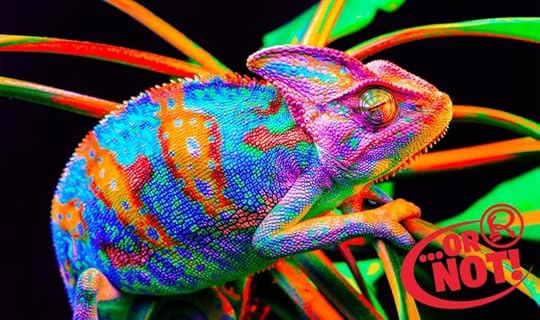
Or Not
In today’s world many misconceptions have been perpetuated—becoming modern day “facts”—when, in reality, myths and hearsay have taken over. Sorry to burst your bubble, but in this weekly column, Ripley’s puts those delusions to the test, turning your world upside down, because you can’t always…Believe It!
Today: Chameleons don’t Change Color for Camouflage.
Color-Changing Chameleons
If you’ve been infatuated with the way chameleons seemingly change their color to match their environment, you may be disappointed to learn chameleons don’t change color to blend into their surrounding at all.
Despite popular perceptions that chameleons are the ultimate hide and seek players, they actually change their color to stand out and warn other chameleons of danger.
Even more disappointing, many species can’t even change anything other than different shades of gray, green, and brown. The layers of color changing skin a chameleon have react to temperature, mood, and stress. When you see video footage of a chameleon quickly changing to a vivid color, it is likely due to fear of an encroaching camera.
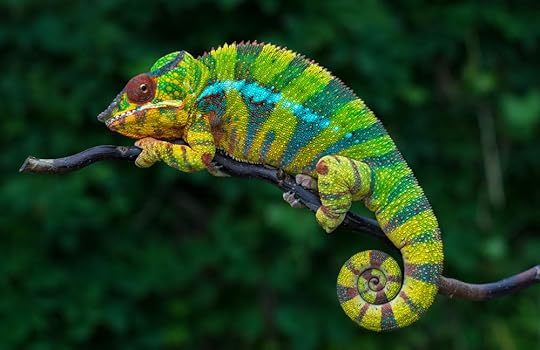
An angry chameleon.
Believe it or not, their color changing independence from their surroundings is further supported by the ability of blind chameleons to change color just like ordinary ones. Chameleons in captivity sometimes lose their vision due to vitamin deficiencies or other problems but remain entirely capable of changing color.
Chameleons by nature prefer to live in isolation. A new brood of chameleon babies can become violently territorial. The dull-colored chameleons only really use their color-changing abilities to soak up more sun when it’s cold or take on lighter shades to beat the heat.

Colorful chameleons use their colors to communicate, either to intimidate other males or warn of danger. Females meanwhile will sometimes exhibit special colors when they are pregnant, signaling to males they have no interest in mating.
True Chameleon Curiosities
Their color-changing abilities may be overrated, but chameleons still have some incredibly interesting characteristics. Their eyes, for example, are capable of looking two different directions at once, and can even see into the ultra-violet spectrum of light. This allows them to see color gradations in foliage better and hunt insects more effectively. Their tongues also help. A chameleon’s tongue can stretch one and a half times their body length, and pull insects into their gaping mouth in just a tenth of a second!

Source: Or Not: Chameleons Change Their Color to Match their Surroundings
CARTOON 11-30-2017
November 29, 2017
Corporal Wojtek: the Bear who Fought in WWII
Featured in Ripley's Believe It or Not!

After Germany seized Poland in the Blitzkrieg, Polish forces were evacuated into the Middle East to assist Britain in the Africa campaign. On the road to Tehran, Polish soldiers encountered a boy caring for a Syrian brown bear and decided to buy the young cub. After staying in a refugee camp and being fed condensed milk from old vodka bottles, the bear was donated into the 22nd Artillery Supply company and named Wojtek, meaning “joyful warrior.”

He quickly became the group’s mascot, dining on honey and marmalade, smoking and eating cigarettes, and indulging in his favorite drink: beer. Wojtek was immensely popular with the soldiers and civilians. He often wrestled with his caretakers and was even taught to salute when greeted. Wojtek took to his new family as well—having lost his mother to hunters before being found. Wojtek reportedly would cover his eyes when sad or in trouble and learned to turn on the showers to cool off.
The war bear accompanied the military through Syria, Palestine, and Egypt. Though he was known to raid the kitchen and engage in other wanton mischief. He also contributed to the war effort, reportedly catching an Arab spy who was so afraid of the bear that he spilled enemy secrets.

Drafted into the Army
When it was time to sail north into Italy to assist in the defeat of Mussolini’s armies, Wojtek was made an official private to gain passage.
He was assigned two caretakers—Henryk Zacharewicz and Dymitr Szawlugo—as well as his own serial number and pay book. He slept in the tent with his fellow enlisted men but had a special wooden crate instead of a cot.
Growing over six feet tall, and weighing 250 pounds, Wojtek was a curious sight to behold on the battlefield. During an assault against the Winter Line at the Battle of Monte Cassino, several accounts were made of Wojtek helping to carry artillery shells for his comrades. Due to his effect on morale, the Polish Army recognized Wojtek’s service by featuring him on the 22nd Supply Corps insignia.

Retirement
After the war ended, the 22nd Artillery Supply was moved to an English airfield, but as his comrades began returning home, he was donated to the Edinburgh Zoo to live out his days. Visitors and the press loved the curious bear, but Polish soldiers were also seen stopping by from time to time to greet their old companion and throw him a cigarette.
CARTOON 11-29-2017
November 28, 2017
The Poison Garden of Alnwick Castle
Featured in Ripley's Believe It or Not!


Cannabis at the poison garden.
Alnwick Castle in Northumberland, England, plays host to the small but deadly Poison Garden—filled exclusively with around 100 toxic, intoxicating, and narcotic plants. Surrounded by the beautiful 12-acre Alnwick Garden, the boundaries of the Poison Garden are kept behind black iron gates, only open on guided tours. Visitors are strictly prohibited from smelling, touching, or tasting any plants, although some people still occasionally faint from inhaling toxic fumes while walking in the garden.
Don’t Stop and Smell the Flowers
Though Alnwick Castle does feature many benign botanicals, the poisons growing behind its black iron gates are deadly. Jane Percy, who became the Duchess of Northumberland in 1995, was tasked by her husband to find something to do with the castle’s vast commercial space that had fallen into disuse.
Wanting to set her garden apart from others, she drew inspiration from the Medici poison garden in Italy and decided to make her own oasis of lethality.
The garden contains exotic plants like the Brugmansia of Brazil which can cause paralysis and death, along with common English plants like laurels whose smell can render people unconscious.
Despite warning visitors not to smell, touch, or taste her plants, people have regularly ignored these warning and have been found passed out in the garden.
The garden also contains a variety of illicit drugs, including cannabis, coca, and poppy. The facility uses these plants to further teach the science of apothecary plants and how they can be used.

CC Care_SMC via Flickr
Toxic Plants in the Garden
Strychnos nux-vomica: All parts are toxic, leading to convulsions and death via suffocation.
Hemlock: Muscular paralysis which stops people from being able to breathe (famously used to kill Socrates).
Castorbeans: Inhibits cells from producing proteins, causing pain, inflammation, hemorrhaging in the digestive systems, and vomiting blood.
Digitalis: Nausea, yellowed vision, blurry vision, seizures, and death.
Deadly Nightshade: Blurred vision, rashes, slurred speech, and hallucinations.
Sensing You Want More?
Filled with remarkable photos and over 1,500 all new—all true—stories to immerse yourself in, Ripley’s Believe It or Not! Shatter Your Senses! is the newest book in the bestselling series from Ripley Publishing—so incredible you won’t believe your eyes…or ears…or nose!
Spark your senses here, on the blog, weekly for a feature from the 2018 annual, Ripley’s Believe It or Not! Shatter Your Senses! and follow us on social media for a chance to win a copy, among other unbelievable prizes!
CARTOON 11-28-2017
Ripley Entertainment Inc.'s Blog
- Ripley Entertainment Inc.'s profile
- 52 followers






